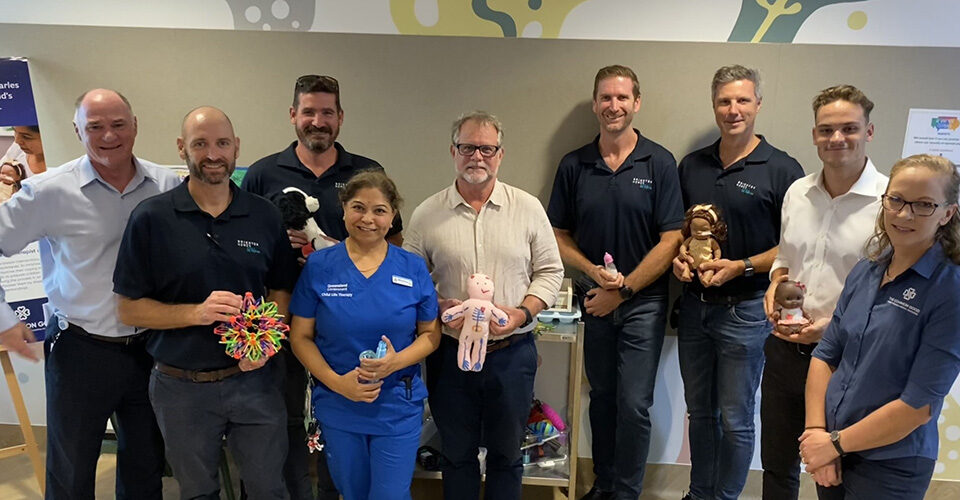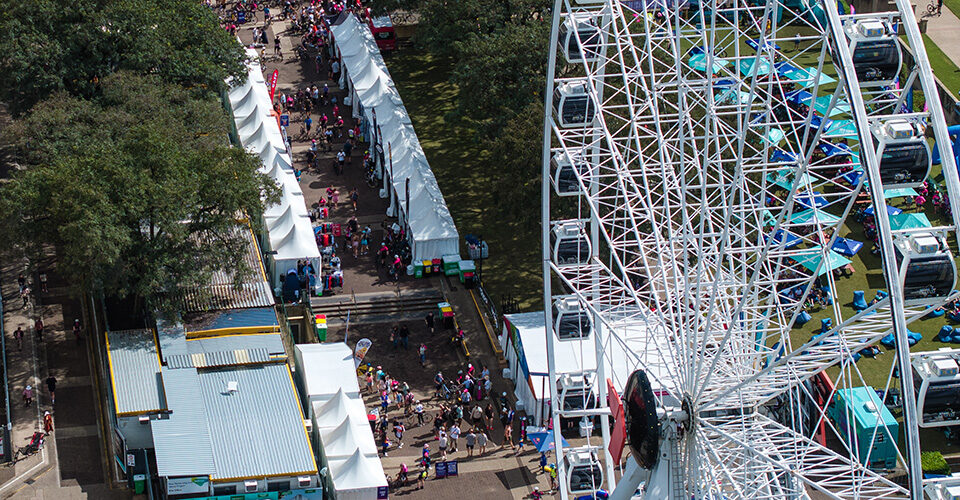For people living with dementia, their surroundings can significantly impact their mood, behaviours, and overall well-being. So how can care environments, like those within hospitals, become more dementia-friendly?
At The Prince Charles Hospital, on Brisbane’s northside, there are hopes to create a village-like community area within the Cognitive Assessment and Management (CAM) Unit – the extended care ward that cares for patients with dementia and other cognitive impairments. The vision for this space, dubbed ‘Charlie’s Village’, includes familiar facades like a hairdresser, bakery, and post office.
It’s hoped the ‘Charlie’s Village’ project can be funded by our generous supporters and local community members through our 2022 Giving Day and our Season of Giving Campaign.
Thanks to funds raised as part of Giving Day in 2021, a sensory garden has been planted in the outdoor space within the ward. The effects it’s had in its short lifetime have been described as “astonishing”. Among its many benefits, it helps staff to manage patient behaviours and moods, as it offers much-welcome diversion and distraction.
About the Charlies Village Vision For Patients with Dementia
Patient stays in the CAM unit are 29 days on average.
Many of the patients have been transferred to this unit after spending time in an acute care ward in the hospital and receiving a diagnosis. Once in the CAM unit, care often revolves around managing the ongoing behaviours and symptoms relating to their cognitive impairment.
“Often when patients with dementia are in acute care settings, they’re quite distressed and scared, things are beeping … and then they come down to this unit and they can walk outside in the sunlight freely and touch the plants without someone trying to stop them, and you see them instantly relax. Giving them that freedom to wander changes their demeanour immediately,” Laura White, Nurse Navigator Cognitive Advocate.
This extended care unit and its layout differs from typical wards within the hospital in a range of ways. Patients have their own rooms that they can personalise. There are communal spaces where they can mingle as they wish, and they have uninhibited access to an outdoor area where they can have tea or coffee with friends and family and take in the sights and sounds of the sensory garden.
With your support, we can create ‘Charlie’s Village’ within that outdoor area – and along with the recently planted garden, it will offer a meaningful and stimulating environment for patients within the unit.
“Bringing them into an environment that’s more homely or looks like a normal community can help people feel safe. They can feel better about themselves, and their quality of life can improve,” said Laura.
“I think Charlie’s Village will help people feel more settled. They’ll feel like they’re at the shops or at the café rather than in that acute hospital setting. It will give them something to engage with cognitively, and as the familiar scenes may jog some people’s memories and elicit feelings of nostalgia, they may have conversations about life outside of hospital and what they used to do,” she added.
Along with the Charlie’s Village space being engaging, it offers a variety of environments for patients in the ward to visit and will help them maintain some independence and mobility.
Designing care environments for people living with dementia
In Australia, it is estimated that around 487,500 people are living with dementia. That number is predicted to more than double by the year 2058. [1]
Of the approximate 11.8 million hospitalisations in Australia in 2020-21, about 25,500 were due to dementia. [2]
“In general, a broad range of evidence suggests that hospitals are not good places for people living with dementia. The confusion and distress associated with hospitalisation, regardless of whether it is planned or unplanned, can exacerbate symptoms of dementia,” Hospital Care for People Living With Dementia, Dementia Australia.
“Environment is very important for someone who has changes in their cognition, changes in their sensory perception. A lot of studies show that environment is a big trigger for changed behaviour,” said Khera Kim, Nurse Practitioner, Cognitive Assessment Management Ward TPCH.
According to the ward’s staff, some benefits of Charlie’s dementia village may include:
- Stimulation: Optimising helpful stimulation and creating positive diversion
- Safety: The area is safe for them to freely wander in and there are sight lines for staff between the in indoor and outdoor spaces within the unit.
- Self-confidence – When they feel safe their confidence to explore areas can grow. This helps to maintain independence and mobility
- Size – Designed to be similar to life-like scale to create feelings of normalcy and allows patients to reminisce
- Purpose and routine – Providing familiarity and meaningful activity for patients
- Places – With a number of proposed facades there will be a variety of places patients can spend time on their own and with others
Building Support for Charlie’s Village
If you would like to support this project and help patients feel moments of comfort through recognisable facades, we are very appreciative.
Please click here to learn more or to donate.
FOOTNOTES
[1] Dementia Australia (2018) Dementia Prevalence Data 2018-2058, commissioned research undertaken by NATSEM, University of Canberra. https://www.dementia.org.au/information/statistics/prevalence-data
[2] AIWH | Dementia in Australia > Hospital Care
Dementia in Australia, Hospital care – Australian Institute of Health and Welfare (aihw.gov.au)









